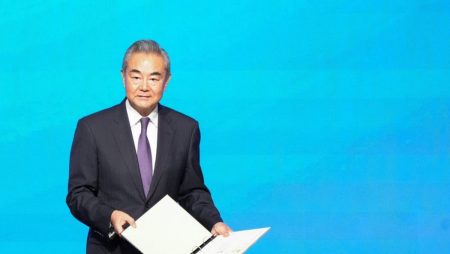On a Monday evening in Manhattan, a seemingly routine traffic incident escalated into a legal predicament for Deirdre O’Connor, the wife of former interim NYPD Commissioner Tom Donlon. O’Connor, 62, found herself on the wrong side of the law after being involved in a three-car collision near the intersection of East 53rd Street and First Avenue. While the initial collision appeared to be caused by a hit-and-run driver, O’Connor’s troubles stemmed from an expired insurance policy, leading to her arrest and the issuance of a summons. The incident unfolded just before 5:40 p.m., setting in motion a chain of events that would involve police investigation, hospital visits, and a surprising turn for a figure connected to the highest levels of New York City law enforcement.
The sequence of events began when O’Connor, driving a 2019 white Honda CRV northbound on First Avenue, was rear-ended by another vehicle. The impact propelled her car forward, causing a secondary collision with a 2020 black Toyota Sienna operating as an Uber. The Uber was transporting a 46-year-old man in a motorized wheelchair, who unfortunately sustained back and neck injuries as a result of the impact. Emergency services responded to the scene, and the injured passenger was transported to NYU Langone Hospital in stable condition, thankfully avoiding life-threatening injuries. Meanwhile, the driver who initiated the chain reaction by rear-ending O’Connor’s vehicle fled the scene, leaving behind a complicated situation for those involved.
While O’Connor and the 56-year-old Uber driver remained at the scene, cooperating with the arriving police officers, the investigation quickly uncovered an issue beyond the immediate collision. O’Connor’s car insurance had lapsed, a violation that resulted in her arrest at the scene. She was subsequently transported to the 17th Precinct, where she was formally issued a summons and released. The incident took an interesting turn when Donlon, 70, the former interim NYPD Commissioner and O’Connor’s husband, was contacted for comment. He initially professed ignorance of his wife’s arrest, but sources later revealed that he appeared in person at the 17th Precinct. The timing of his arrival remains unclear, leaving open the question of whether he was present during his wife’s processing or arrived later.
The unexpected arrest of O’Connor, connected to a prominent figure in New York law enforcement, highlighted the impartial nature of the law. Despite Donlon’s former high-ranking position within the NYPD, his wife’s alleged infraction was treated like any other. The incident also underscores the importance of maintaining valid car insurance, a legal requirement designed to protect all parties involved in traffic accidents. The lapse in O’Connor’s insurance policy, regardless of the circumstances of the collision, exposed her to legal consequences. While the hit-and-run driver bears responsibility for initiating the incident, O’Connor’s own legal oversight added another layer of complexity to the situation.
The hit-and-run driver, the catalyst for the entire sequence of events, remains at large. The NYPD continues its investigation, seeking to identify and apprehend the individual responsible for initiating the collision. The incident exemplifies the challenges faced by law enforcement in pursuing hit-and-run cases, where the fleeing driver often leaves behind limited evidence and relies on the anonymity of escape. The search for the driver will likely involve gathering witness testimonies, analyzing any available surveillance footage, and potentially issuing public appeals for information. The successful apprehension of the hit-and-run driver is crucial not only for holding them accountable for their actions but also for providing a sense of closure to the other individuals involved in the collision.
Adding a further layer of intrigue to the story is the ambiguity surrounding O’Connor and Donlon’s relationship. While records indicate they are married, they maintain separate residences, raising questions about the current status of their marriage. This detail, although peripheral to the legal proceedings stemming from the traffic incident, adds a touch of personal complexity to the narrative. It underscores the human element behind the headlines, reminding us that even those connected to prominent figures face personal challenges and complexities in their lives. The incident, a relatively minor traffic collision compounded by an insurance violation, has inadvertently shed light on a personal aspect of the former commissioner’s life, illustrating how public figures can be unexpectedly drawn into the spotlight for matters seemingly unrelated to their professional roles.










